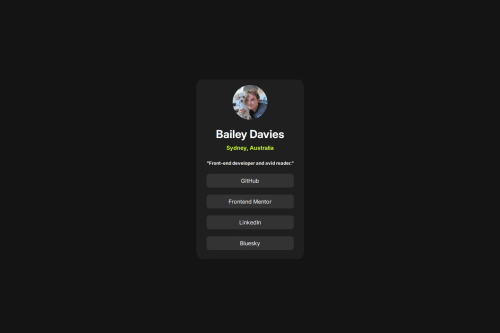Social links card using Flexbox

Solution retrospective
I had taken a break from learning web dev, so jumping back into this project required some refreshers. I was pleased at how quickly it came back to me.
Please log in to post a comment
Log in with GitHubCommunity feedback
- @YacoubDweik
Hey!
Good job!
Just a small note, your avatar here is only 50px * 50px right? so why uploading a very big img then cut it with css?
instead to make the website faster, make the img let's say 100px * 100px or something similar or even 50px * 50px.
You might not notice how this makes your site slow but with 2 or 3 images like this you will definitely feel that
Join our Discord community
Join thousands of Frontend Mentor community members taking the challenges, sharing resources, helping each other, and chatting about all things front-end!
Join our Discord